Picture stepping into a sunlit home office where each element—from the paint on the walls to the chair at your desk—reflects a commitment to sustainability and well-being. As remote work becomes a lasting norm, designing eco-friendly workspaces has shifted from trend to necessity, blending productivity with environmental responsibility. Drawing on biophilic design principles and energy-efficient technologies, green home office ideas can reduce carbon footprints, boost mood, and optimize comfort without sacrificing style. Whether you’re revamping an existing room or building a new setup, embracing sustainable materials, natural elements, and smart systems elevates both form and function. Let’s explore creative strategies to transform your home office into an eco-conscious haven.
1. Maximize Natural Light in Your Home Office
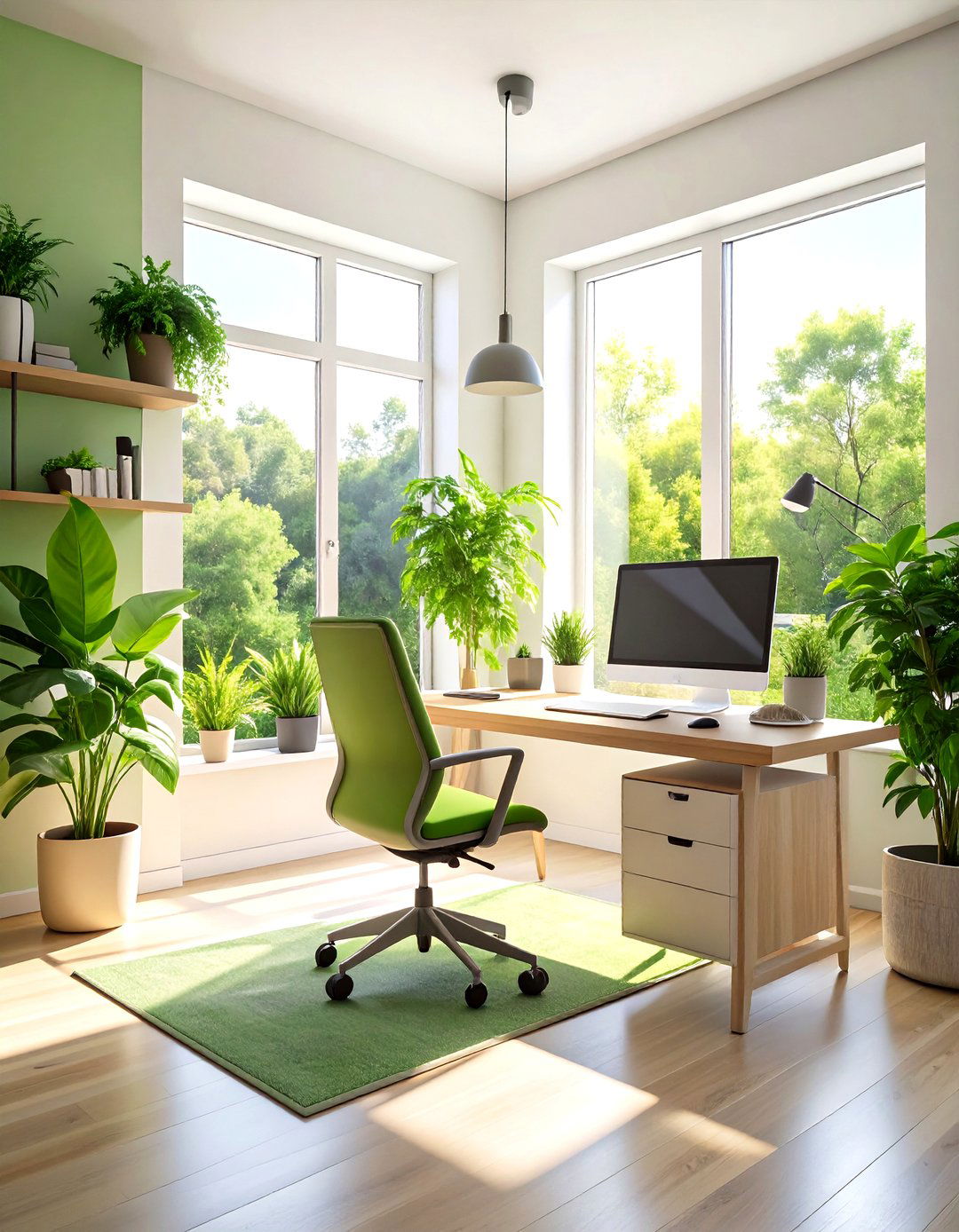
For a luminous workspace, position your home office near windows or under skylights to harness natural light throughout the day. This approach not only cuts down on electricity costs by reducing the need for artificial lighting but also boosts mood, circadian rhythm, and productivity in a green home office. To maximize light distribution, keep window treatments minimal or use sheer curtains that diffuse glare. Add reflective surfaces like light-colored walls or strategically placed mirrors to bounce sunlight deeper into the room. Pair this setup with daylight-balanced white paint to maintain brightness. By optimizing natural light, your home office becomes both eco-friendly and energizing.
2. Invest in Energy-Efficient LED Lighting

Moreover, swapping traditional incandescent bulbs for energy-efficient LED lighting transforms both the environmental footprint and atmosphere of your green home office. LED bulbs use up to 75% less energy and last 25 times longer than incandescent options, cutting replacement frequency and electronic waste. To create a well-lit workspace, choose LED fixtures labeled as daylight-balanced or tunable white to mimic natural light and reduce eye strain. Combine overhead LEDs with adjustable desk lamps featuring dimming controls, so you can tailor brightness throughout the day. Proper placement above or beside your work surface prevents harsh shadows. This blend of efficiency and customization ensures your home office stays bright, productive, and eco-conscious.
3. Integrate Indoor Plants for Air Quality and Calm
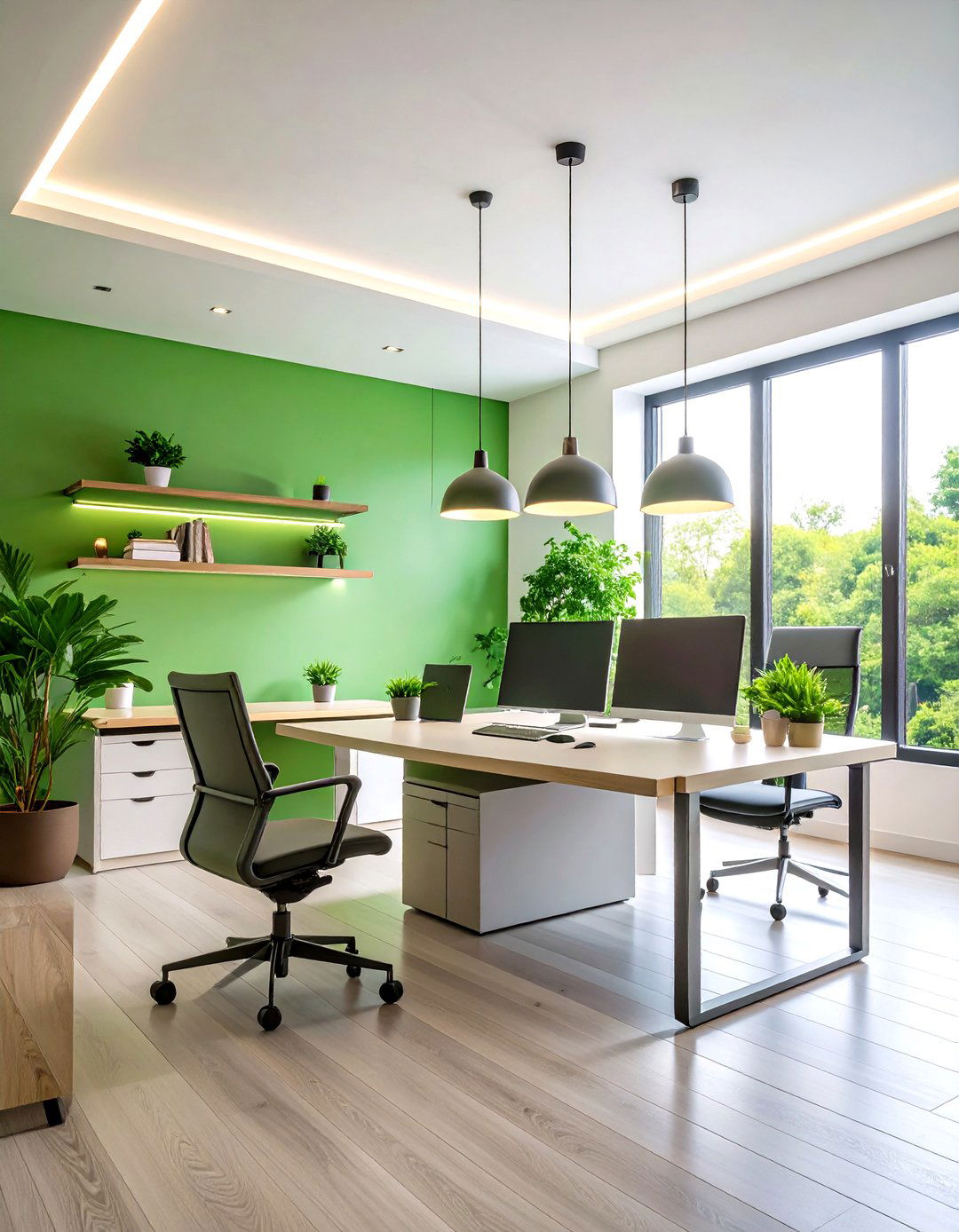
An easy way to improve ambiance and air quality in your green home office is to introduce a variety of indoor plants. Plant species like snake plants, pothos, and peace lilies thrive in office lighting and silently filter toxins, making your workspace healthier and more serene. Group smaller planters on shelves and large floor pots beside your desk for layered greenery that supports attention restoration. To streamline care, select low-maintenance options and use self-watering pots or moisture meter stakes. Rotate plants monthly to ensure even growth and sunlight exposure. Beyond aesthetics, plants boost mood and productivity, fostering a more enjoyable, eco-friendly atmosphere.
4. Repurpose and Upcycle Furniture for Unique Style
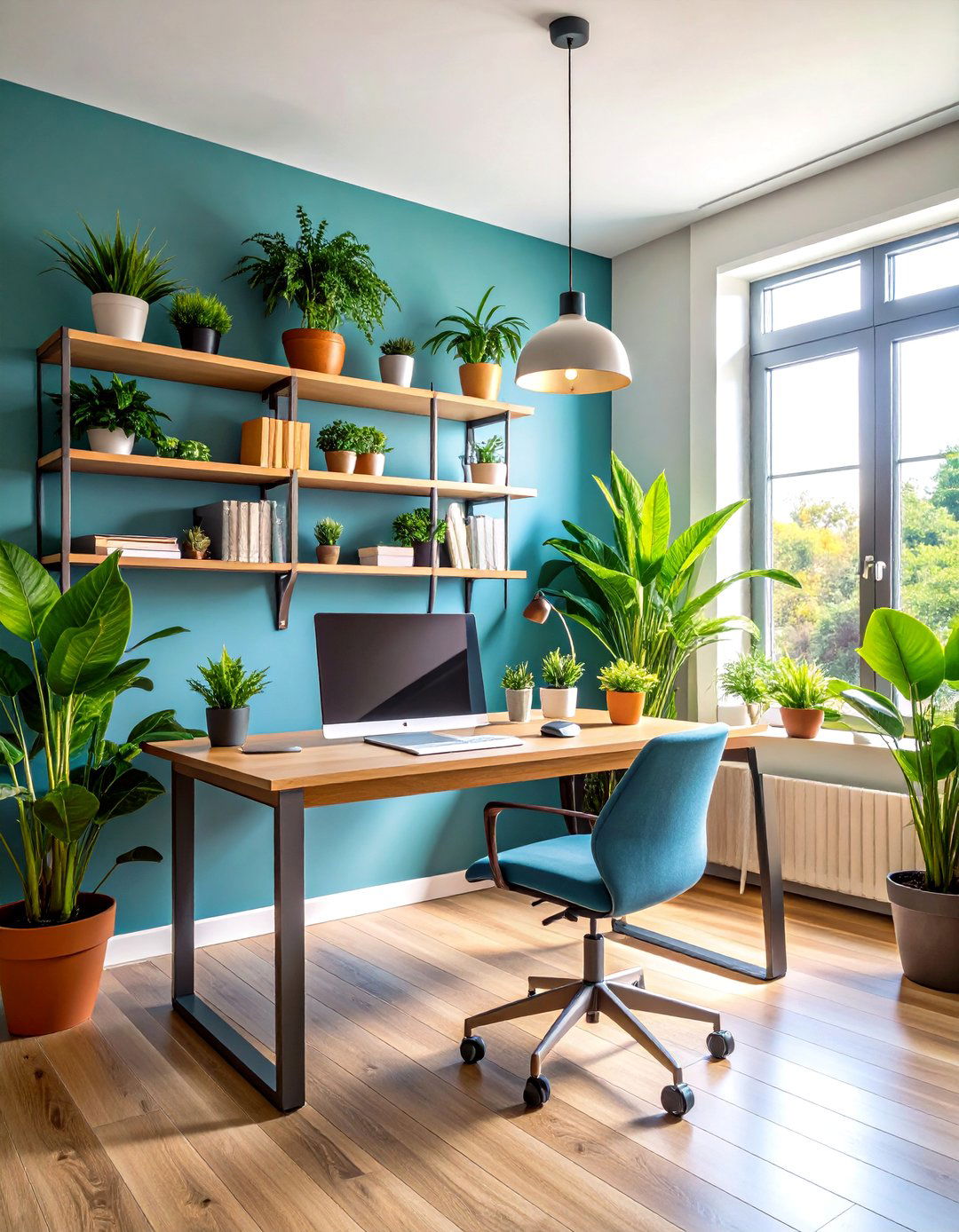
To revitalize your home office with sustainable style, upcycle or source secondhand furniture that tells a story. Scouring local thrift shops or online marketplaces can unearth sturdy desks, chairs, and shelving units ready for a fresh coat of eco-friendly paint or natural finish. By giving pre-loved pieces a new life, you reduce demand for raw materials and divert items from landfills. Sand down worn spots, apply low-VOC stain, and replace hardware with recycled metal pulls for a personalized touch. If you need new furniture, choose brands committed to sustainability, using responsibly harvested wood or recycled steel. This approach creates a unique, budget-friendly workspace that embodies green values.
5. Choose Low-VOC, Non-Toxic Paints
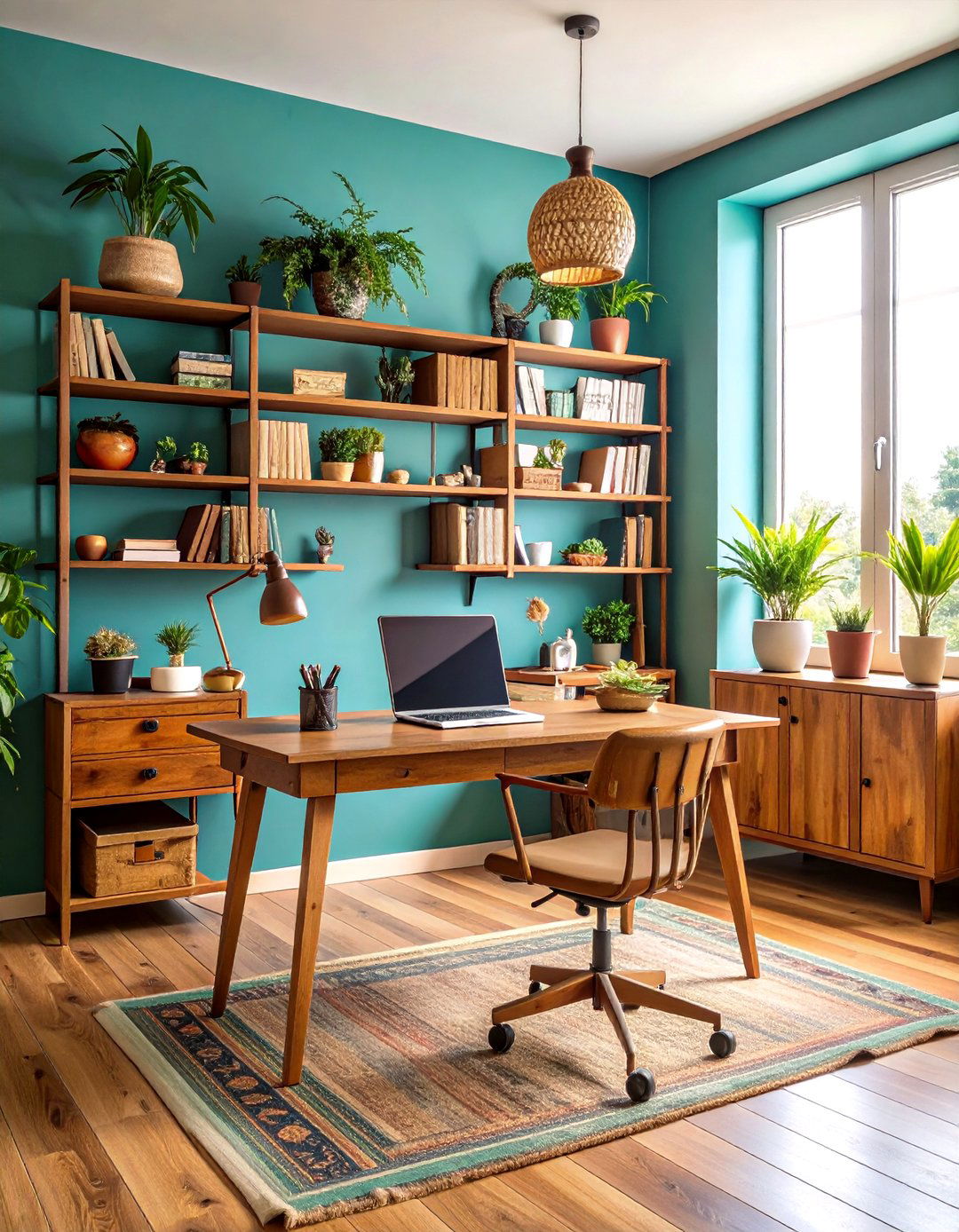
By choosing low-VOC and non-toxic paints for your green home office, you safeguard indoor air quality and reduce exposure to harmful chemicals. Low-VOC formulations emit minimal volatile organic compounds, preventing headaches and respiratory irritation commonly associated with conventional paints. Before you paint, patch and sand walls, then apply a primer labeled low-VOC to seal any existing emissions. Opt for lighter hues like soft greens or off-whites that reflect light and foster a calming, nature-inspired ambiance. Always ventilate the room by keeping windows open or using an air purifier with a HEPA filter during and after painting. This simple switch promotes a healthier workspace and aligns your home office with sustainable practices.
6. Install a Living Green Wall
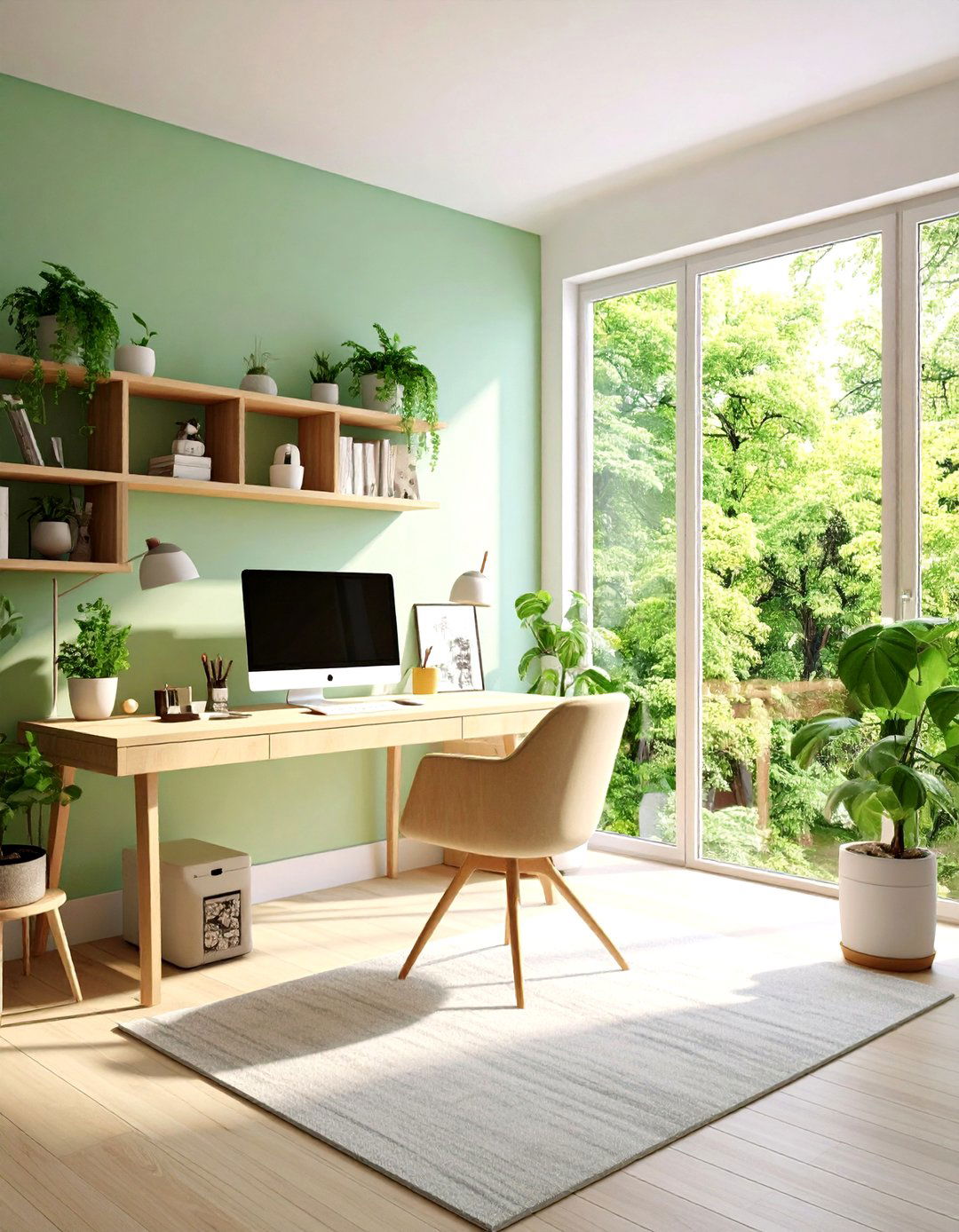
With a living green wall, you transform a blank surface in your home office into a vibrant ecosystem that purifies air, reduces stress, and absorbs sound. Living walls consist of modular panels or frames that support plant growth vertically, making the most of limited floor space. Select hardy varieties like ferns, succulents, or trailing ivy that thrive in indoor conditions. Install an integrated irrigation system or use self-watering planters to maintain consistent moisture levels effortlessly. Regularly trim and rotate plant modules to ensure even growth and prevent overcrowding. Beyond aesthetics, a vertical garden anchors biophilic design principles, fostering wellness and creativity while reinforcing the eco-friendly ethos of your workspace.
7. Select Sustainable Desk Materials
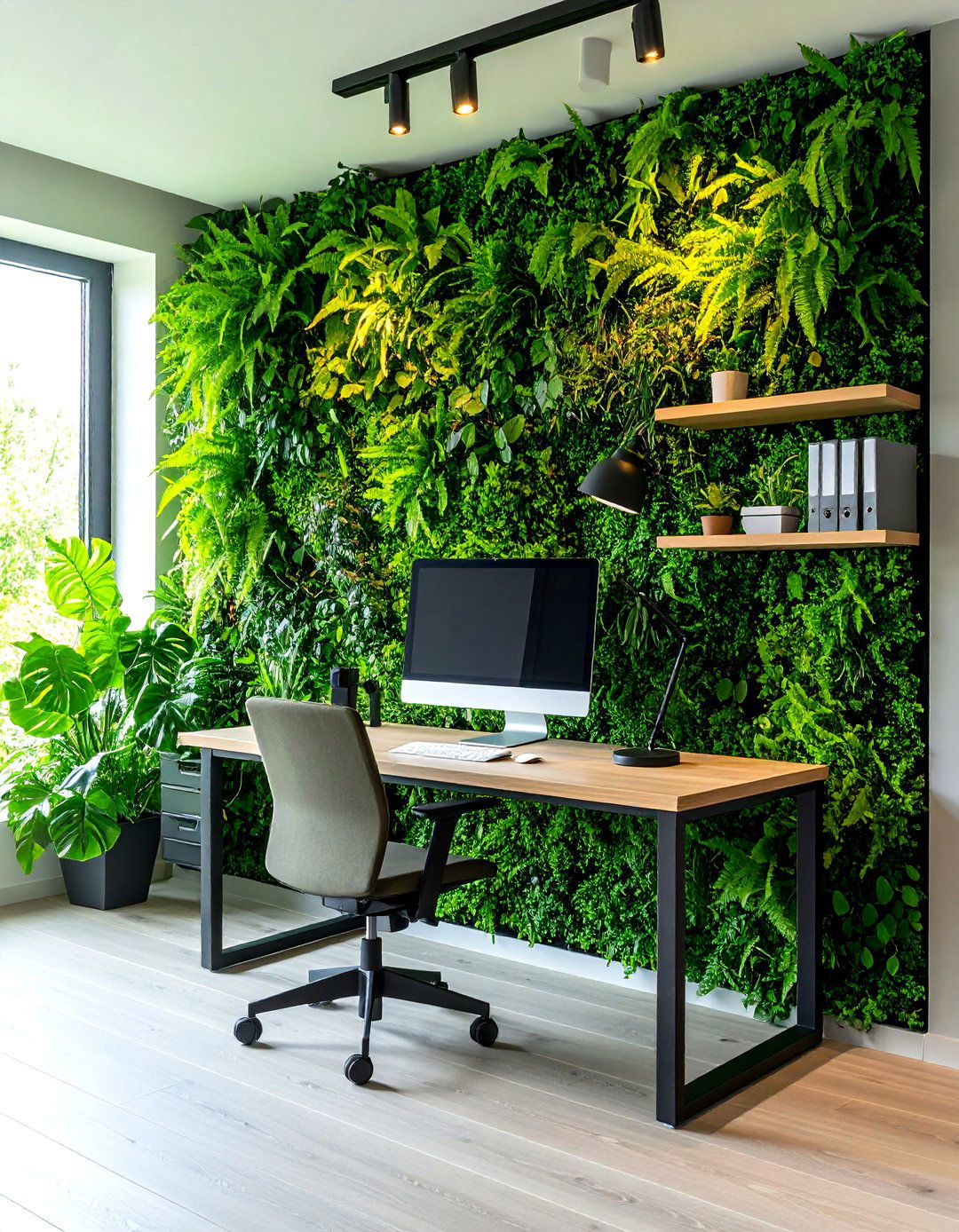
Another impactful choice for a green home office is selecting desks crafted from sustainable materials like bamboo or reclaimed wood. Bamboo grows rapidly and regenerates without chemical fertilizers, making it an eco-friendly alternative to slow-growing hardwoods. Reclaimed wood from old barns or factories brings unique character while preventing perfectly good timber from entering landfills. When shopping, verify that bamboo furniture is certified by the Forest Stewardship Council (FSC) or sources reclaimed material transparently. Pair your sustainable desk with glued-free joinery and non-toxic finishes to avoid off-gassing. This thoughtful selection not only enhances durability and style but also reflects a commitment to environmental stewardship in every work session.
8. Adopt Eco-Friendly Flooring Options
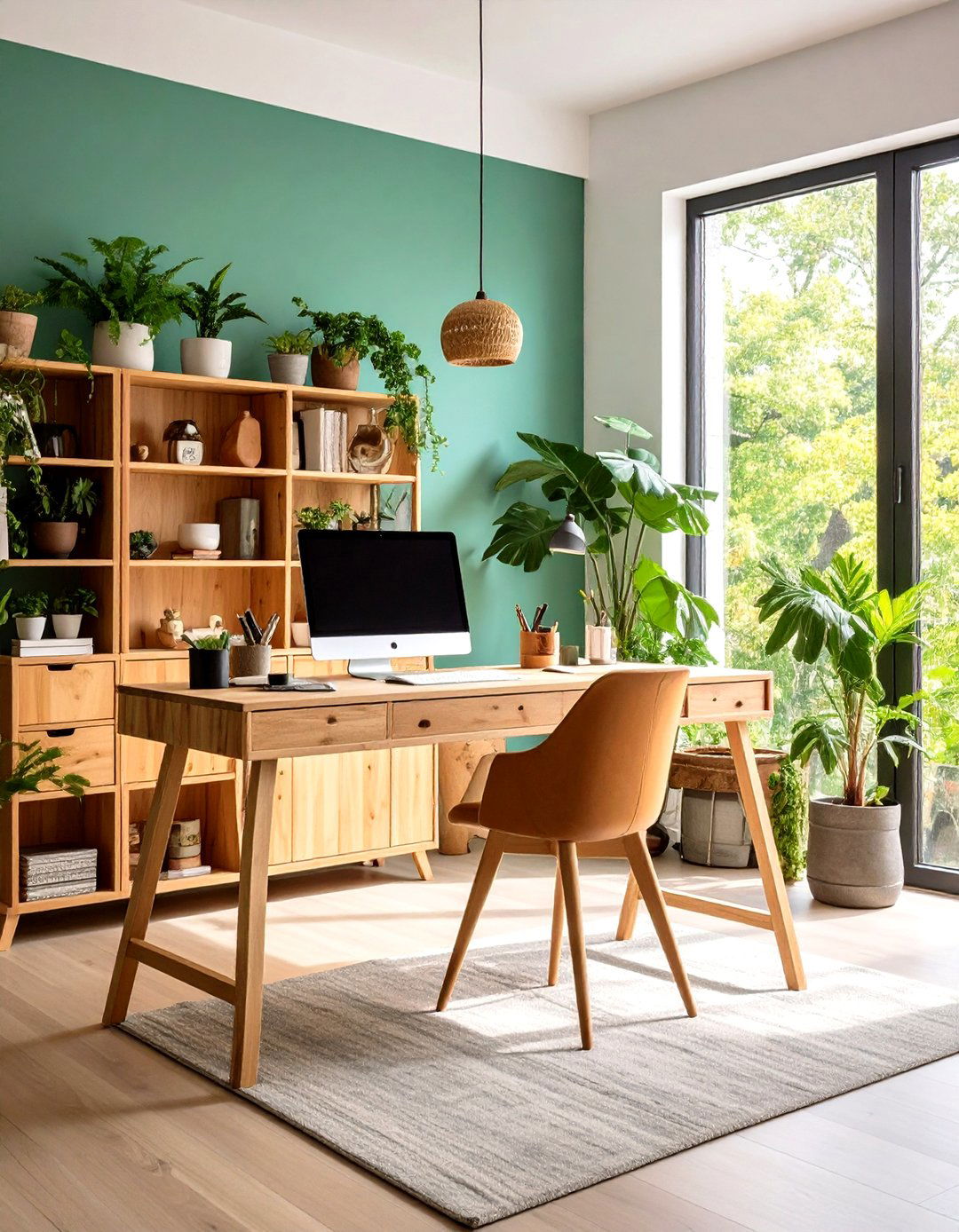
Although flooring may seem unrelated to productivity, choosing eco-friendly options in your home office can yield lasting environmental and health benefits. Materials like bamboo, cork, or recycled-content carpet minimize resource extraction and often contain low or zero toxic adhesives. Bamboo flooring is durable and renewable, while cork provides natural soundproofing and cushioning underfoot. If you prefer carpet, look for products certified by the Carpet and Rug Institute’s Green Label program to ensure low chemical emissions. For installation, use non-toxic, water-based adhesives or click-together systems that eliminate glue entirely. These flooring choices create a comfortable, hypoallergenic workspace that reflects sustainable priorities from the ground up.
9. Embrace Paperless Digital Tools

With the rise of cloud-based applications and note-taking apps, you can easily transform your home office into a nearly paperless environment that supports sustainability. Centralize documents using platforms like Google Drive or Microsoft OneDrive to eliminate printing and physical storage. Use digital annotation tools instead of highlighters and paper notebooks, and archive completed tasks in project management software. For essential printed items, choose recycled paper and set duplex printing as default to halve paper use. Scan important receipts using mobile scanner apps and store them securely online. A disciplined digital filing system reduces clutter, conserves trees, and streamlines workflows, making your workspace both greener and more efficient.
10. Stock Recycled or Biodegradable Office Supplies
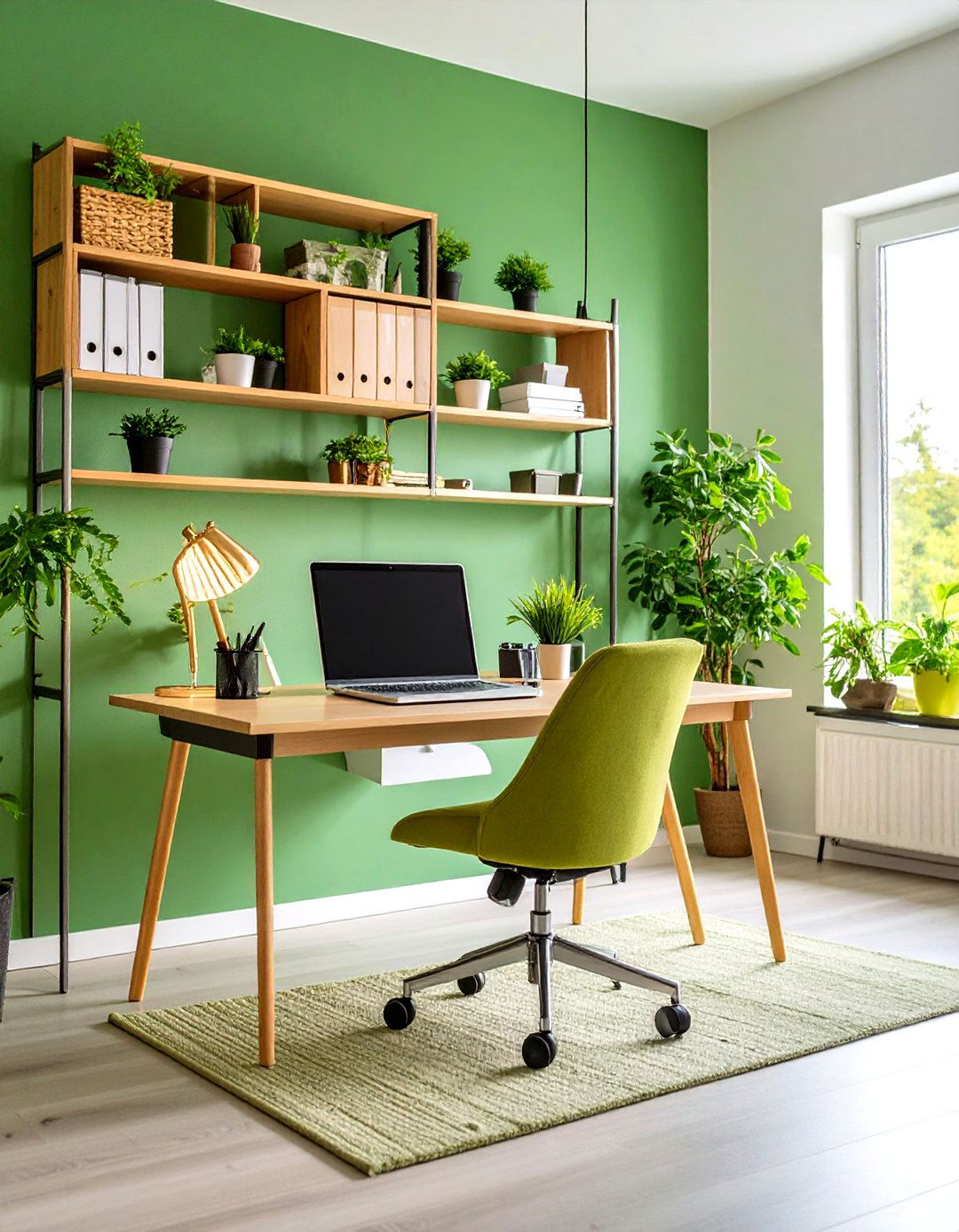
For sustainable stocking, opt for office supplies made from recycled or biodegradable materials in your green home office. Choose notebooks with recycled paper covers and refillable ink pens or fountain pens to minimize plastic waste. Replace traditional sticky notes with reusable silicone versions that cling to surfaces and wash clean. When printing, use recycled-content paper and eco-friendly toner cartridges that manufacturers refill or remanufacture. Supplement with bamboo rulers, recycled plastic file organizers, and biodegradable adhesives like cornstarch-based glue sticks. Storing your supplies in repurposed jars or containers adds a creative touch while cutting single-use packaging. These small switches collectively reduce waste and reinforce eco-conscious habits daily.
11. Choose Energy Star Certified Electronics
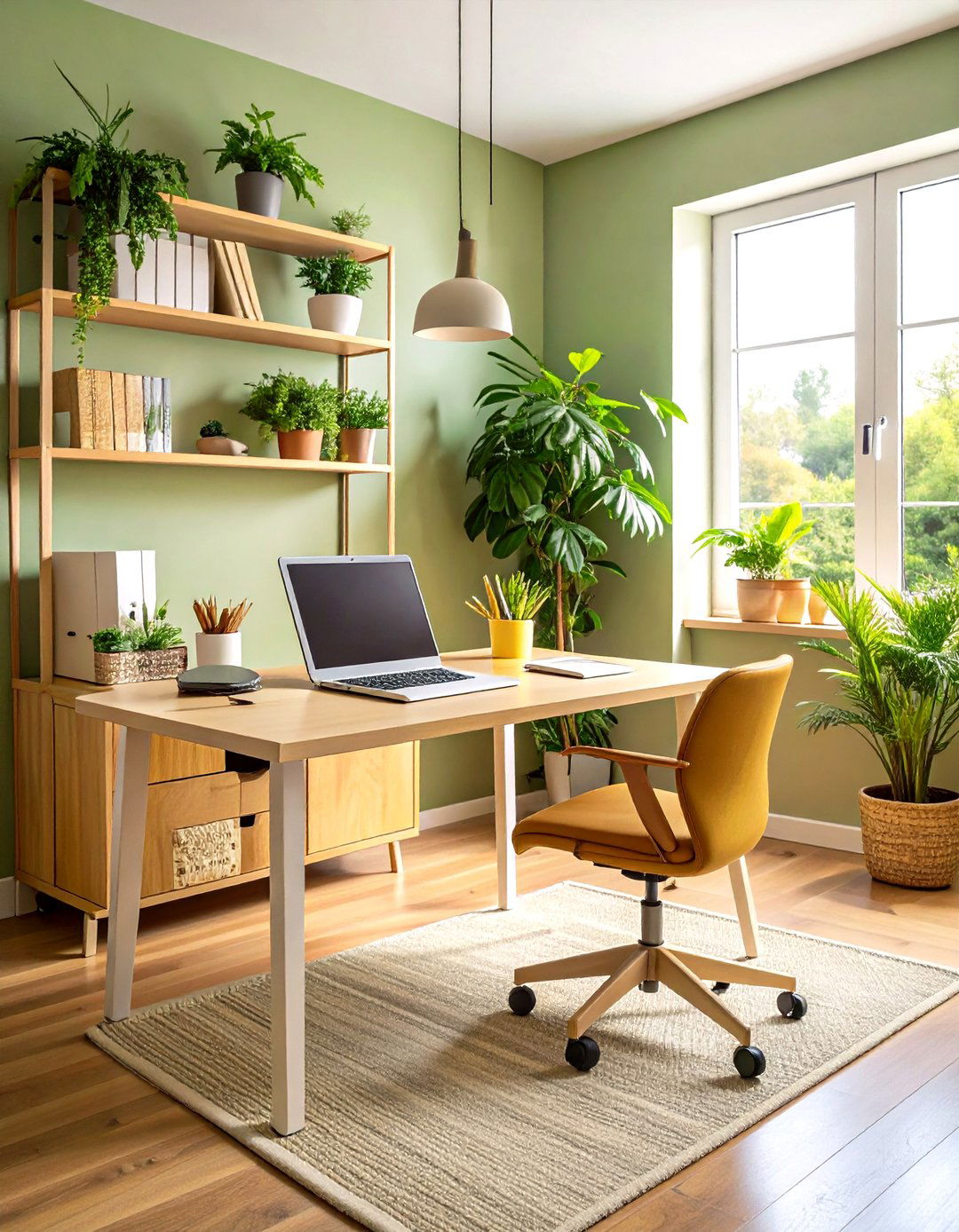
To ensure your home office minimizes energy waste, select Energy Star certified equipment and appliances. Computers, printers, and monitors with the Energy Star label meet strict efficiency standards, using up to 30% less power than standard models. Activate power-saving modes like sleep or hibernate on your devices, and adjust monitor brightness to optimal levels. For climate control, choose smart thermostats compatible with home office zones, allowing precise heating and cooling only when needed. Proper maintenance—such as dusting vents and updating firmware—keeps electronics running efficiently. These measures shorten the payback period of your equipment investments and reduce your carbon footprint, making your workspace both cost-effective and green.
12. Plug in Smart Power Strips
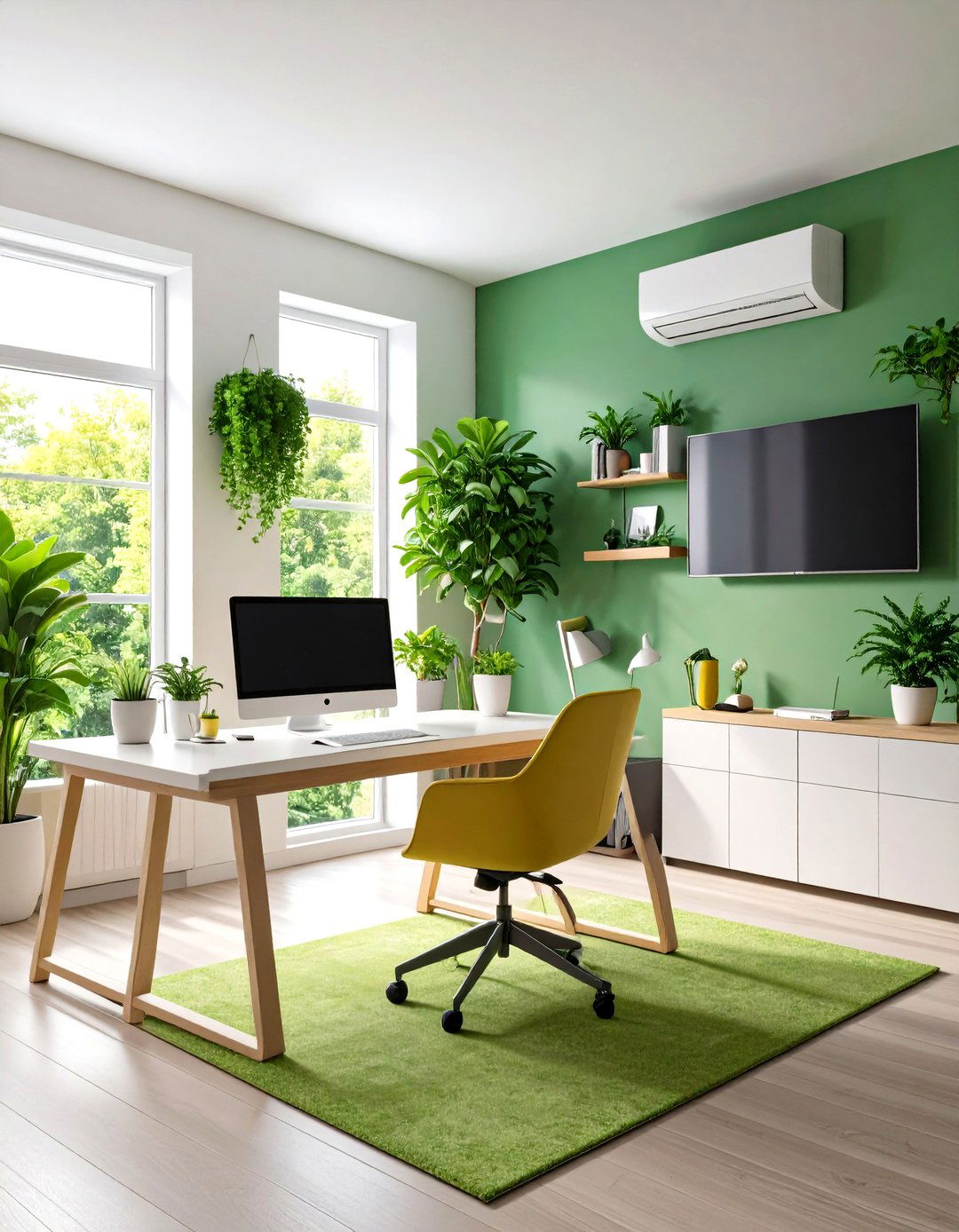
Furthermore, integrating smart power strips into your green home office tackles “vampire” energy drains by automatically cutting power to idle devices. Traditional electronics in standby mode can collectively consume as much as 10% of residential electricity. Smart strips with master-control outlets detect when a primary device powers down and shut off secondary outlets accordingly. You can also schedule power cycling via app controls or set timers for after-hours shutdown. Look for models with surge protection and individual port monitoring to optimize usage. By eliminating phantom loads, these strips reduce energy bills and lower your office’s environmental impact without manual unplugging.
13. Swap to Reusable Drinkware
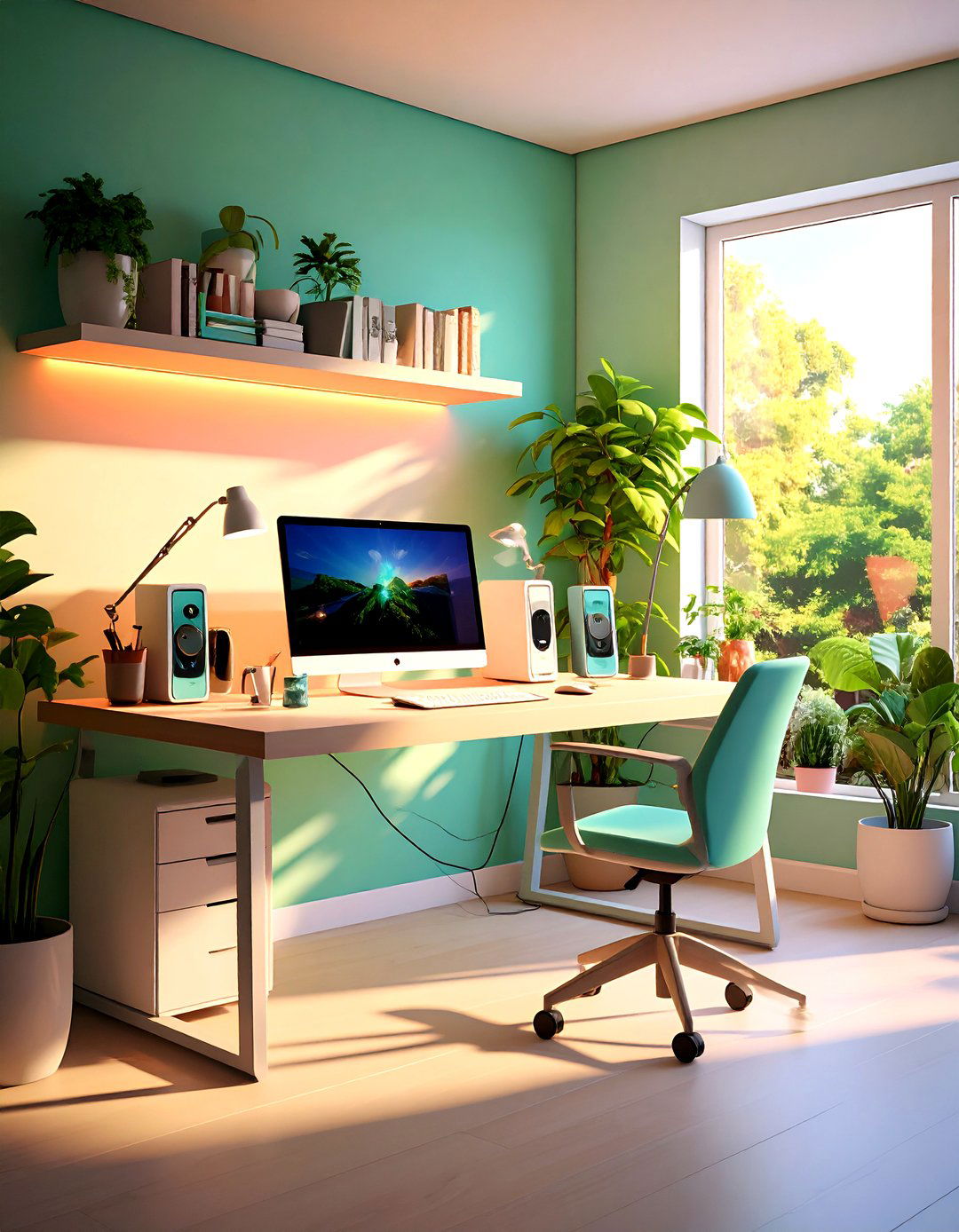
For hydration without waste, swap single-use cups and bottles for reusable drinkware in your green home office. Stainless steel or glass water bottles, ceramic mugs, and silicone tumblers can replace hundreds of disposable cups annually. To keep gear handy, install a mug tree or magnetic bottle holder near your desk. Look for insulated bottles that maintain temperature and are dishwasher-safe for easy cleaning. Encourage a routine by adding a refill station on your desk or a sleek countertop filter that connects to your water line. Branded or personalized drinkware adds a personal touch and reduces stray cups cluttering your space. These changes make staying hydrated eco-friendly and stylish.
14. Outfit Soft Furnishings with Natural Textiles

Additionally, outfitting your home office with natural textiles elevates comfort and sustainability. Choose curtains, rugs, and upholstery made from organic cotton, hemp, linen, or wool, which are biodegradable and often produced without harsh chemicals. A woven hemp rug adds texture underfoot and insulates against cold floors, while organic cotton curtains filter daylight gently. For seating, look for cushions stuffed with natural fibers like kapok or recycled wool covered in toxin-free fabric. When purchasing, verify certifications such as GOTS (Global Organic Textile Standard) or OEKO-TEX to ensure ethical and chemical-free production. These textiles enrich your workspace with warmth and eco-conscious style, blending function and environmental stewardship.
15. Craft Decor from Upcycled Treasures

Moreover, crafting DIY decor from upcycled materials adds character and reduces waste in your green home office. Transform glass jars into pencil holders by wrapping them with reclaimed fabric strips or cork tiles for a custom look. Repurpose wooden crates as floating shelves or magazine racks with minimal hardware. Create artwork from old maps, fabric scraps, or pressed leaves sealed in clear frames for a personal, eco-friendly gallery wall. Even lighting fixtures can gain new life—retrofit unused wine bottles as pendant lamps with LED bulbs. These charming accents celebrate sustainability, spark creativity, and make your workspace uniquely yours without the carbon cost of new decorations.
16. Implement Modular, Sustainable Storage
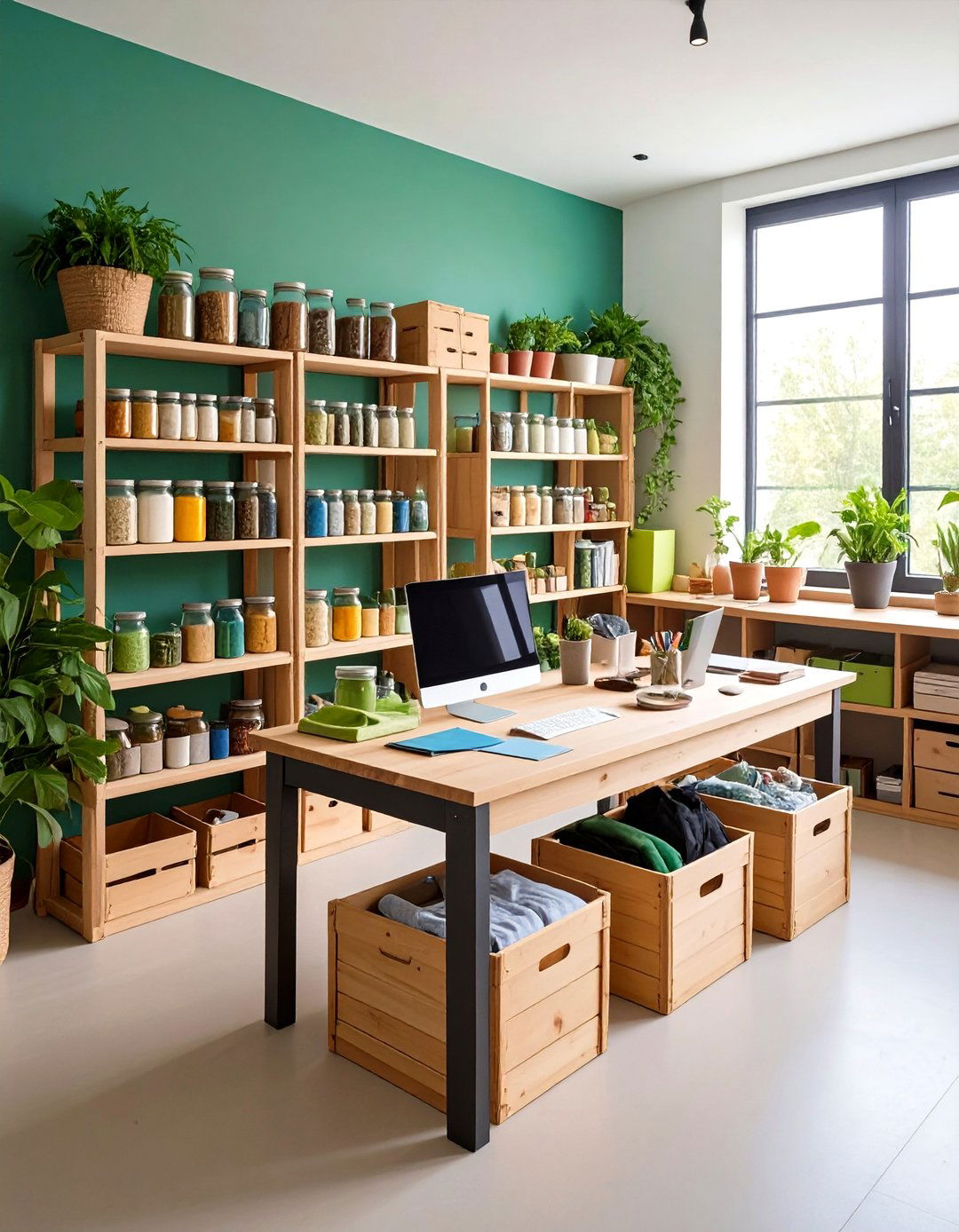
By implementing modular storage solutions crafted from repurposed wood or eco-friendly composites, you can keep your home office organized while supporting sustainability. Adjustable shelves allow you to reconfigure layouts as needs evolve, preventing the purchase of new units. Seek modular systems that snap together without nails or glue, reducing toxic off-gassing. Incorporate stackable boxes made from recycled plastic or bamboo to corral paperwork and supplies. Label containers using chalkboard paint or reusable tags to minimize paper waste. Open designs encourage visual tidiness and prevent clutter. This flexible storage approach adapts to both small nooks and full rooms, optimizing space and aligning your green home office with circular design principles.
17. Clean with Eco-Friendly Products
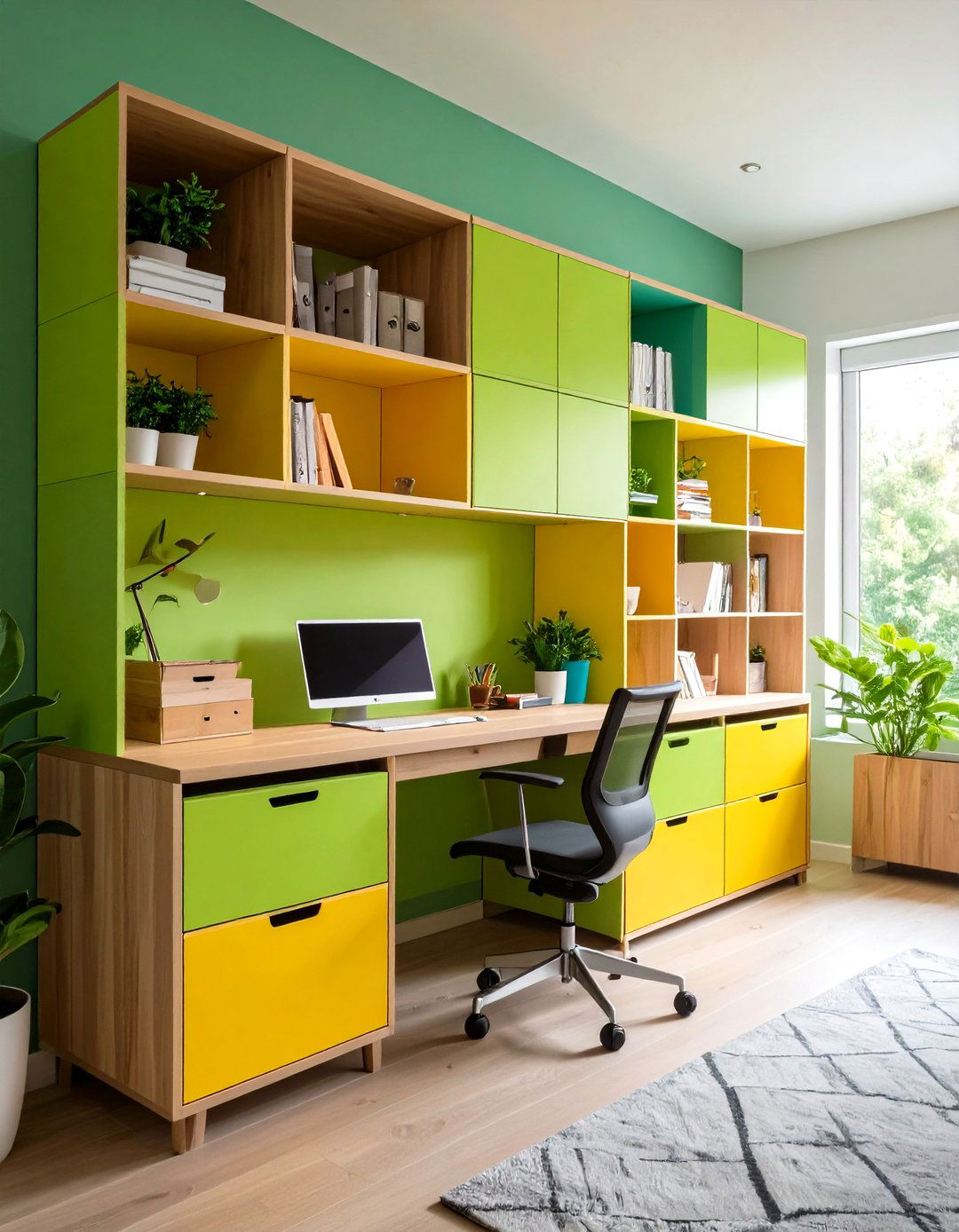
Using eco-friendly cleaning supplies keeps your green home office spotless without introducing harmful chemicals into the air. Opt for plant-based all-purpose cleaners with biodegradable ingredients that are free from phosphates, chlorine, and synthetic fragrances. Make DIY solutions by mixing white vinegar, water, and essential oils like lemon or tea tree for effective disinfecting and a fresh scent. Replace single-use wipes with washable microfiber cloths that capture dust and bacteria and can be laundered repeatedly. For floors and surfaces, choose non-toxic floor wax or wood polish to preserve sustainable materials. By maintaining a clean environment with green products, you protect both your health and the planet while fostering a refreshing workspace.
18. Paint with a Nature-Inspired Palette

Selecting a nature-inspired color palette can harmonize your home office with the outdoors and promote calm focus. Earthy greens, soft beiges, and muted browns echo forests and soils, while gentle blues reflect the sky. Accent walls painted in moss or olive green provide depth without overwhelming the space. Balance darker hues with crisp white trim and neutral bedding for visual contrast. Introduce subtle pattern through botanical-print pillows or wall art featuring natural motifs. Research shows that biophilic color schemes lower stress and improve concentration, fostering a more productive environment. By painting strategically and layering tonal accents, your green home office becomes a tranquil retreat that energizes creativity.
19. Hang Thermal Insulated Drapes
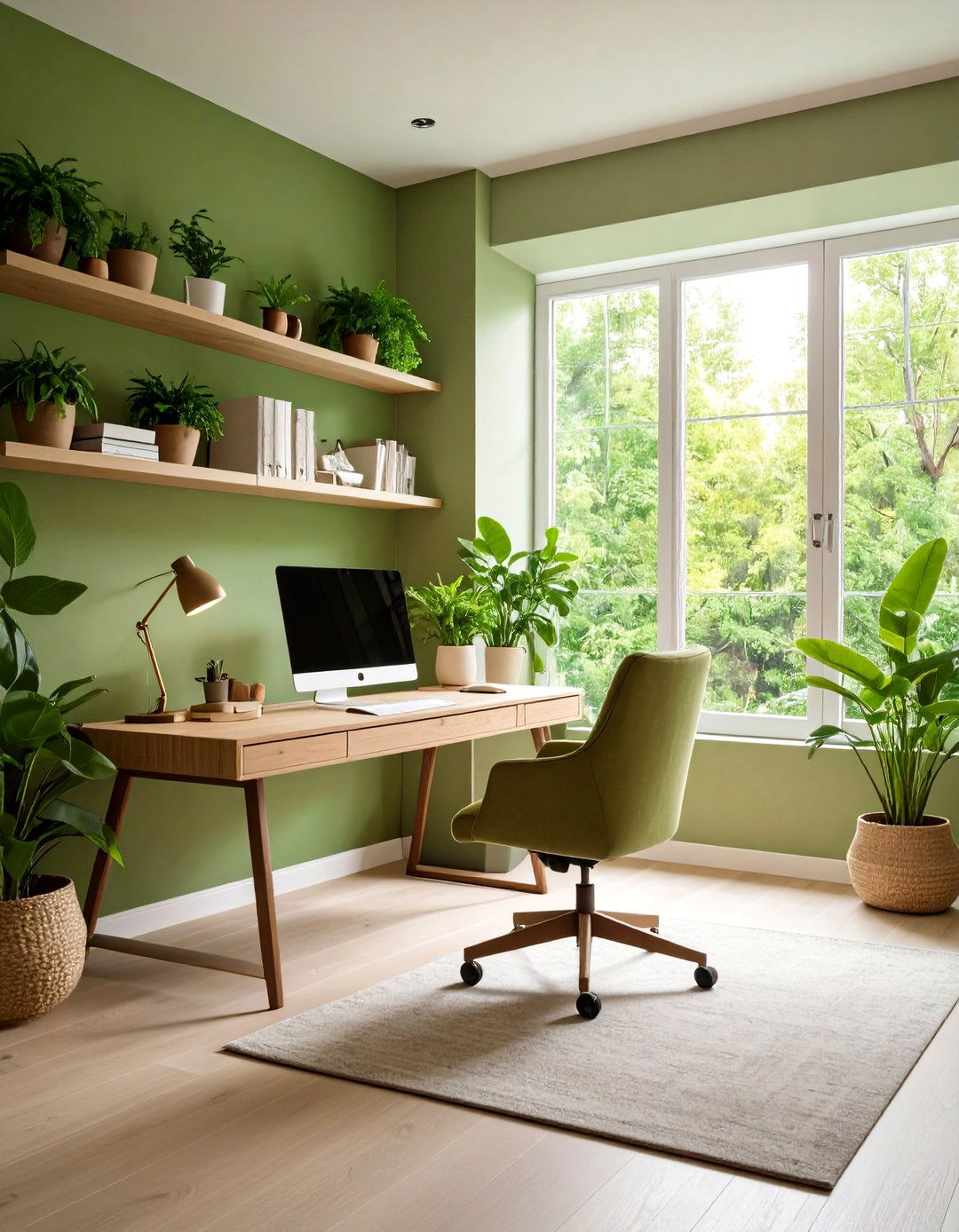
Installing thermal insulated curtains enhances energy efficiency and comfort in your green home office by preventing heat loss in winter and reducing heat gain in summer. These curtains feature multiple layers or specialized coatings that block infrared radiation and improve window insulation. Position curtain rods high above windows and extend them wider than the frame to eliminate drafts. Pair insulated drapes with sheer undercurtains to enjoy privacy without sacrificing daylight when full blackout isn’t needed. During sunny days, partly close curtains to filter intense sun rays and protect furnishings from fading. Over time, this simple upgrade lowers heating and cooling costs, reduces your carbon footprint, and creates a cozier, more sustainable workspace.
20. Install Skylights or Solar Tubes
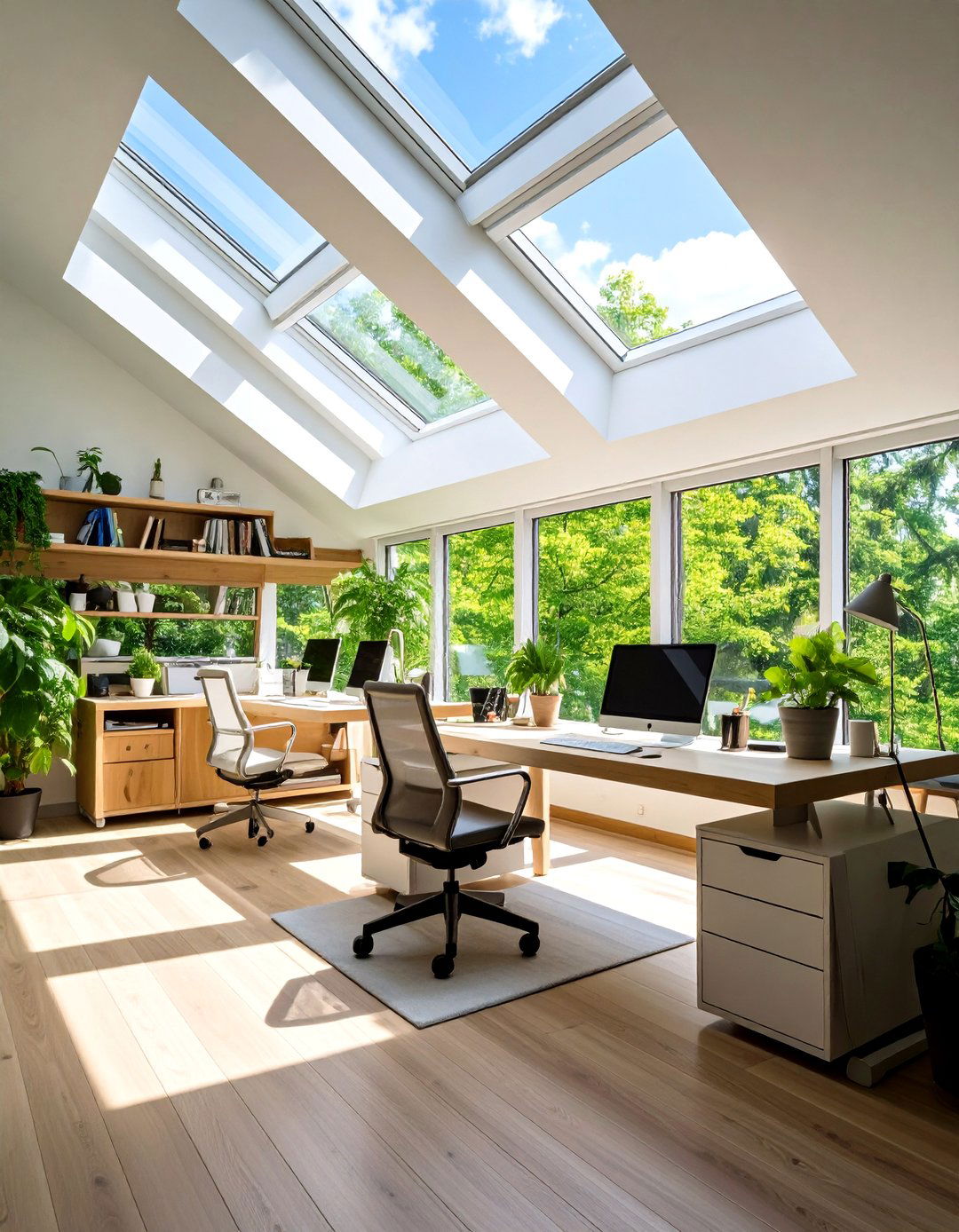
Finally, integrating skylights or solar tubes in your green home office introduces abundant daylight, cuts reliance on artificial lighting, and elevates well-being. Skylights offer broad overhead illumination, while solar tubes channel sunlight through reflective tubing, fitting even small rooms. Before installation, assess roof orientation to maximize southern exposures in the northern hemisphere or vice versa. Consider diffusing covers or adjustable blinds to manage glare. Solar tubes can be a budget-friendly option with minimal structural changes. Pair these features with thermal glazing to prevent heat loss. By harnessing rooftop sunlight, your office becomes brighter, more energy-efficient, and connected to nature’s rhythms, fostering productivity and sustainability simultaneously.
Conclusion:
As we’ve seen, green home office ideas range from harnessing natural light to integrating energy-efficient systems and biophilic elements. Each strategy—from plant walls and upcycled furniture to smart power strips—contributes to a healthier, lower-impact workspace. By combining sustainable materials, mindful design, and eco-friendly technologies, you can craft a home office that supports both productivity and the planet. Embrace these ideas to transform your work area into an inspiring, green haven where every detail aligns with environmental awareness and personal well-being.


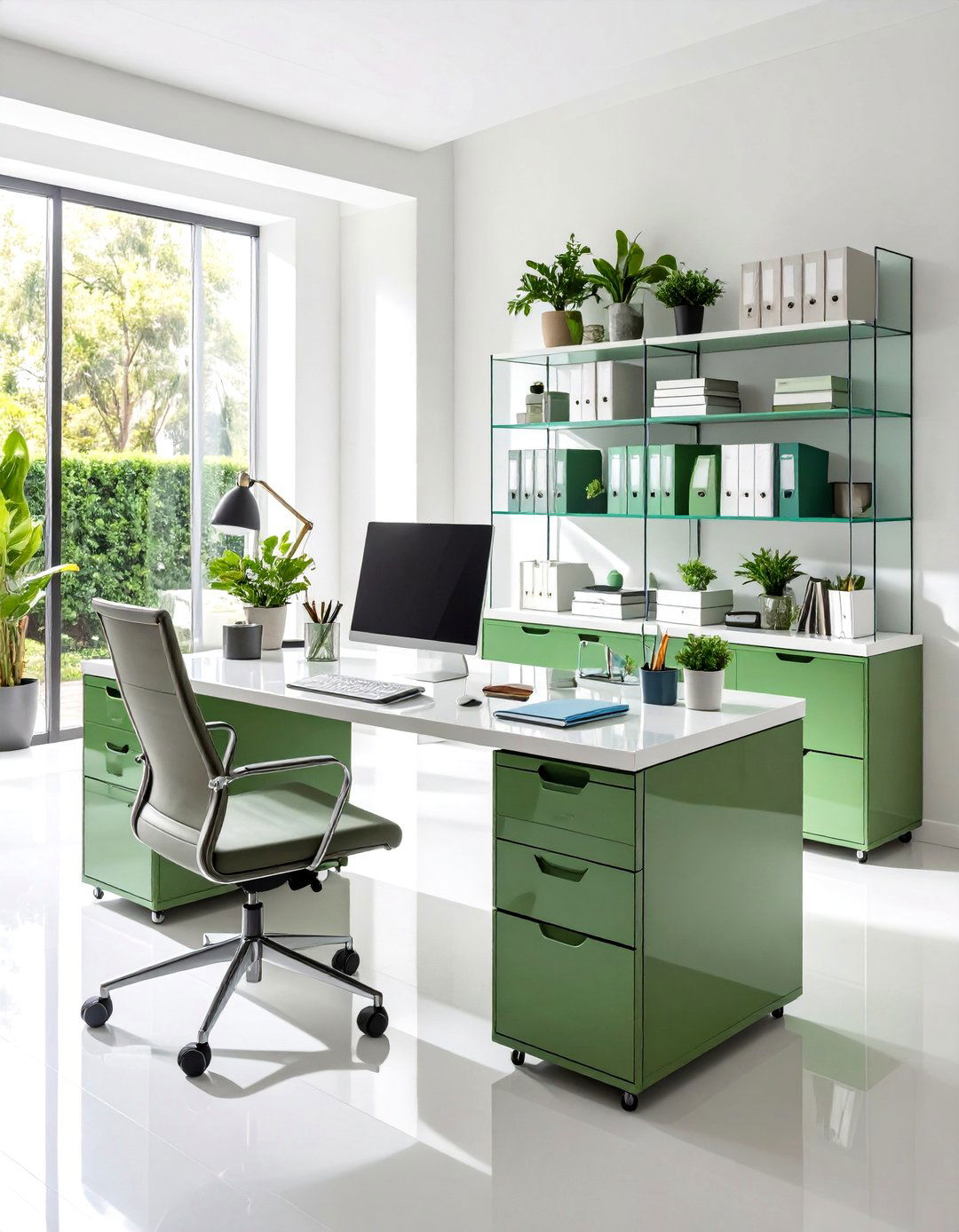

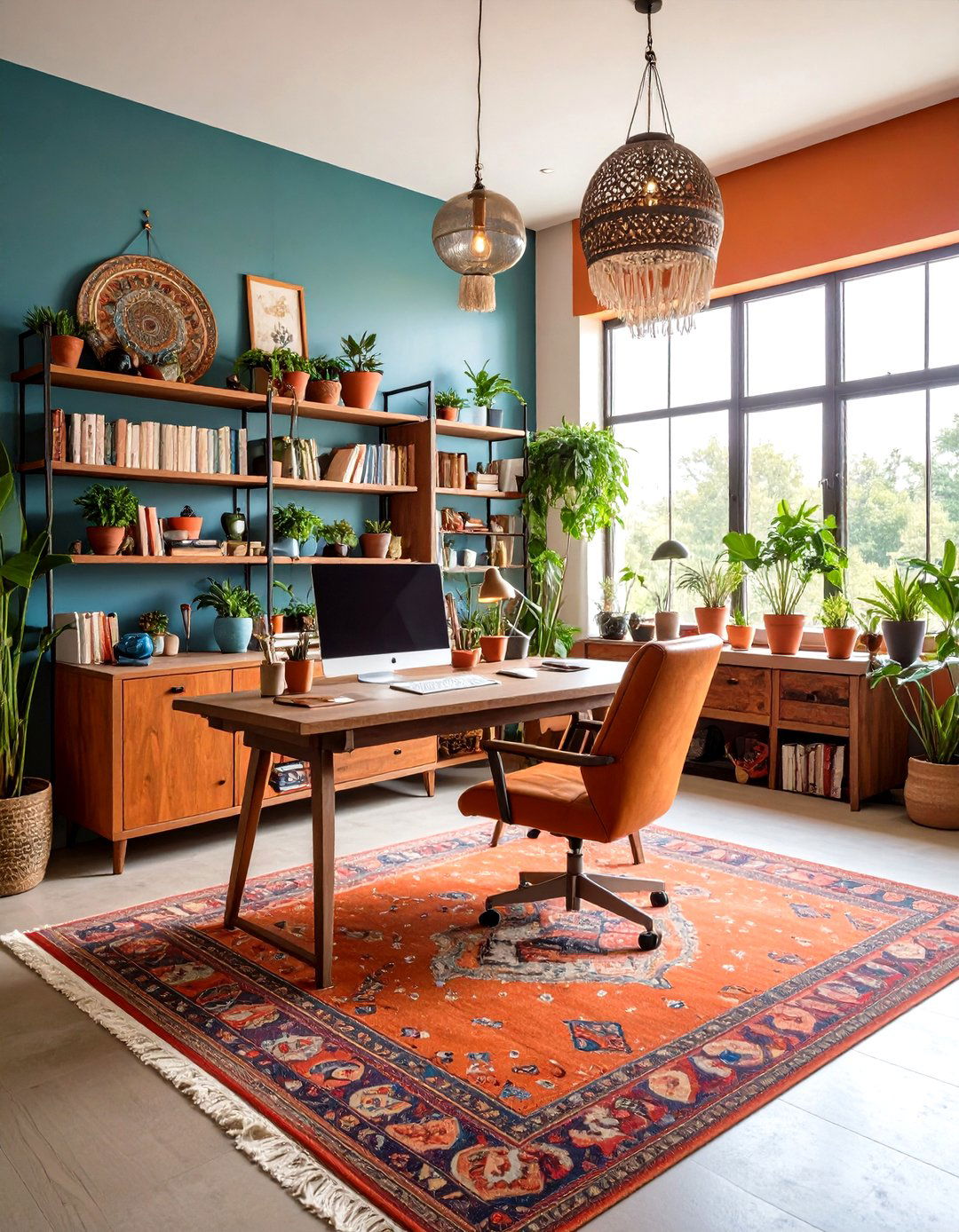
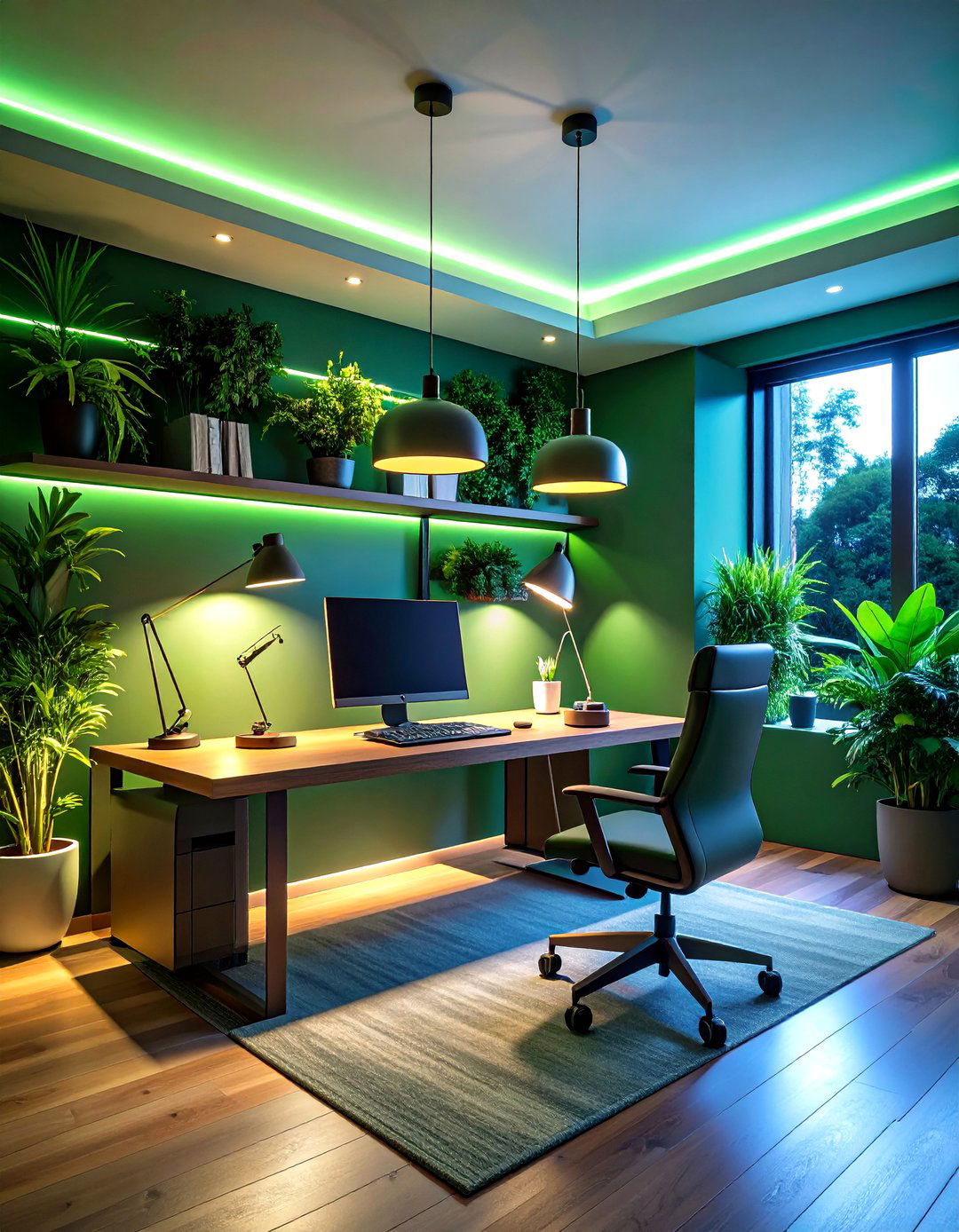





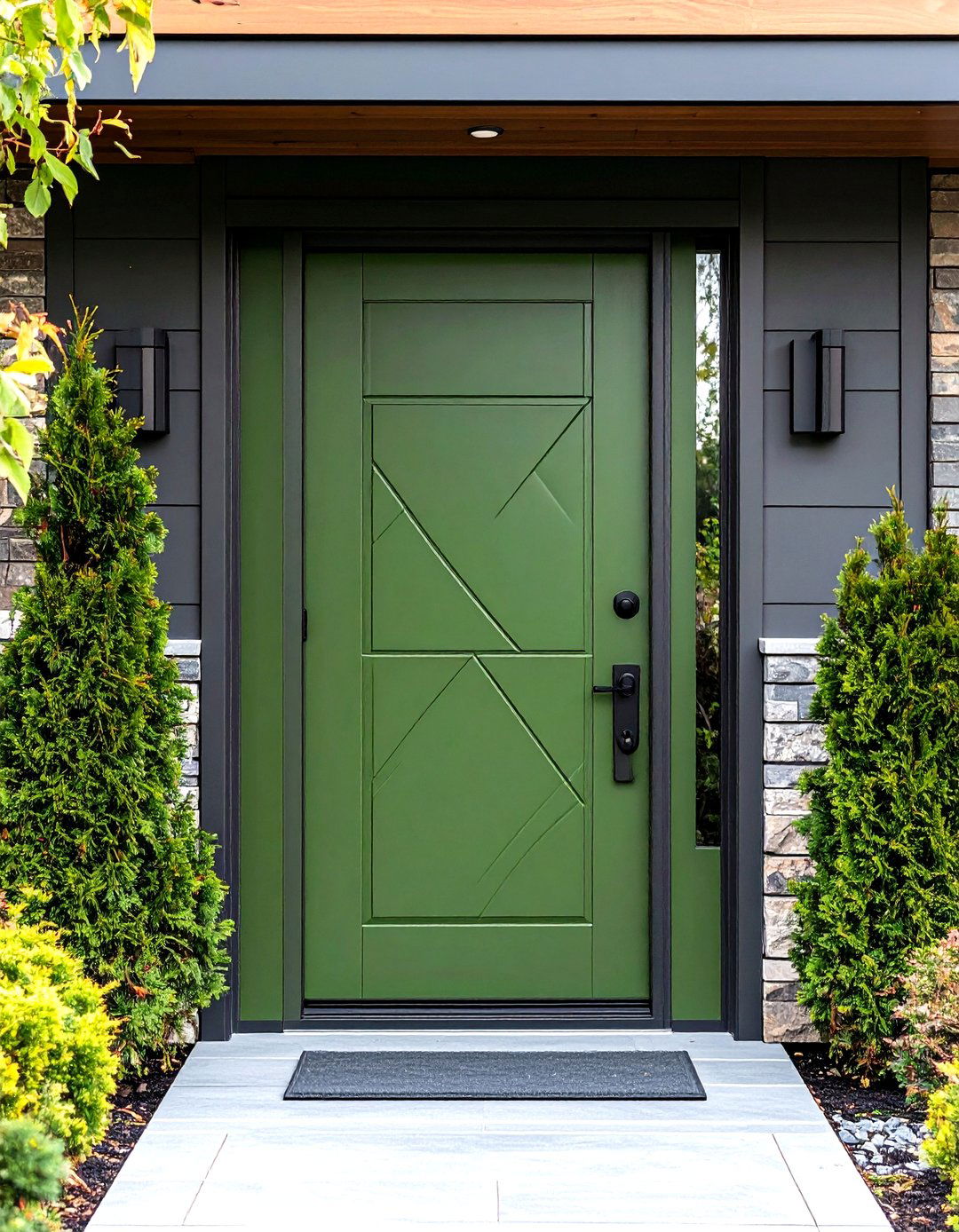
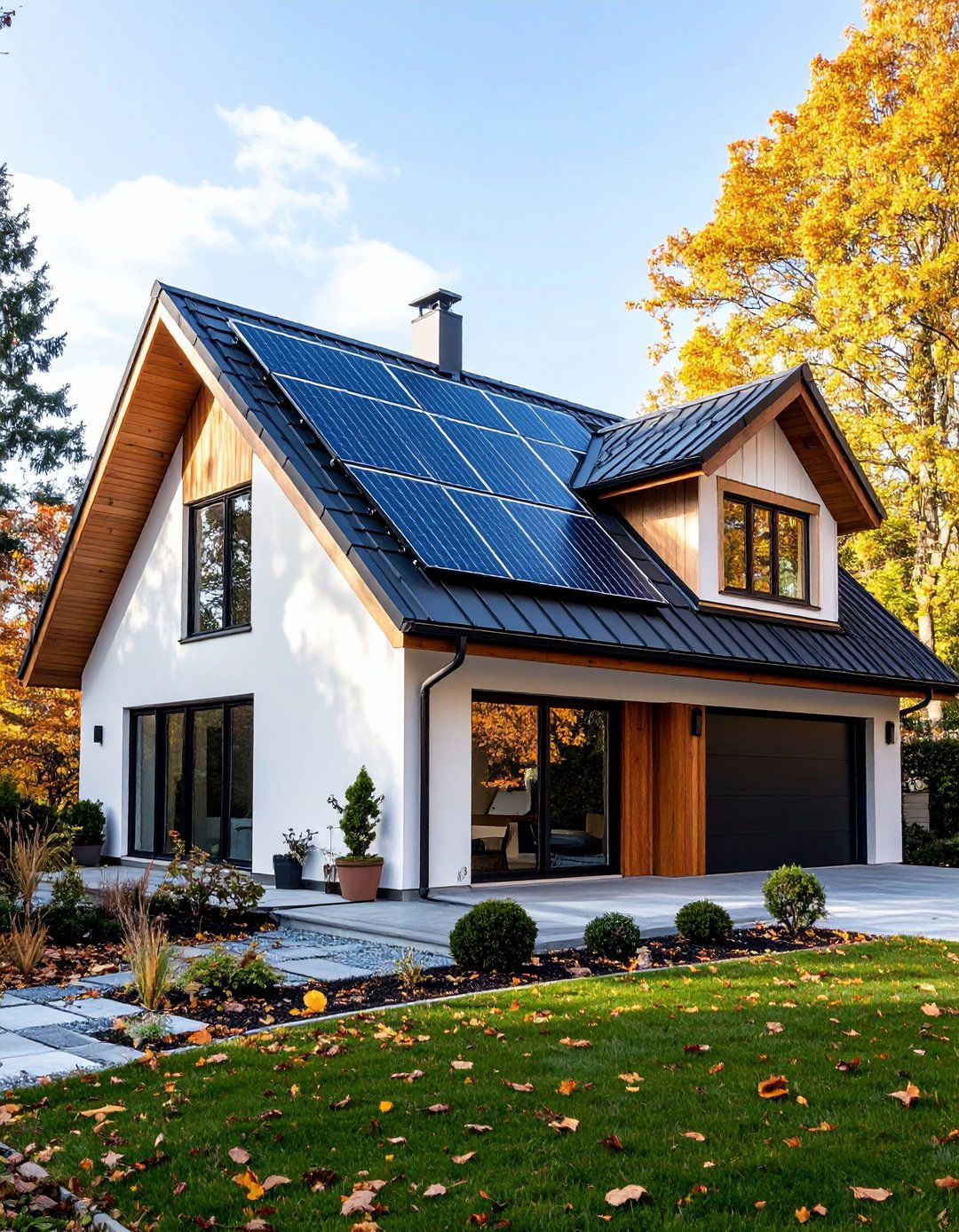
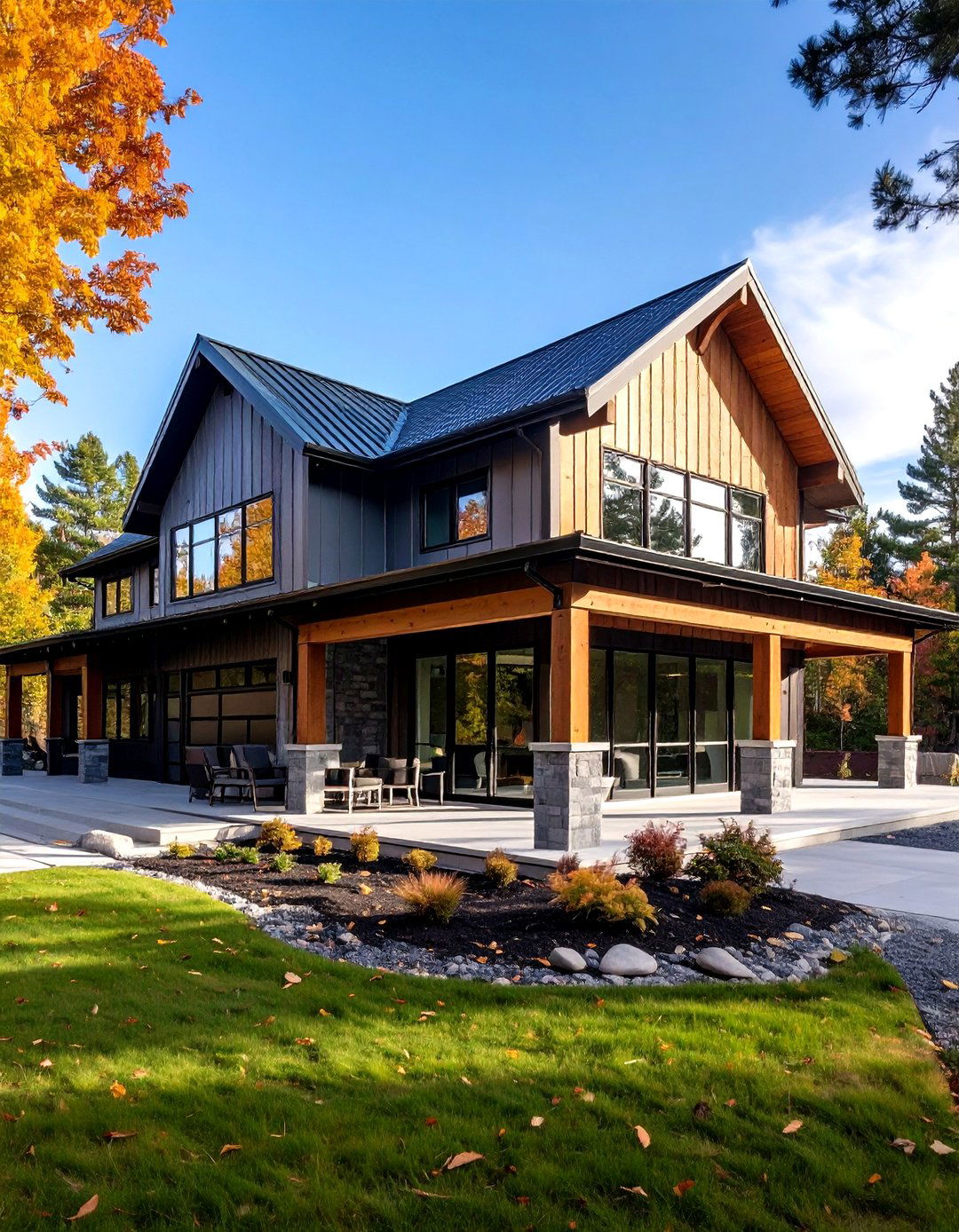
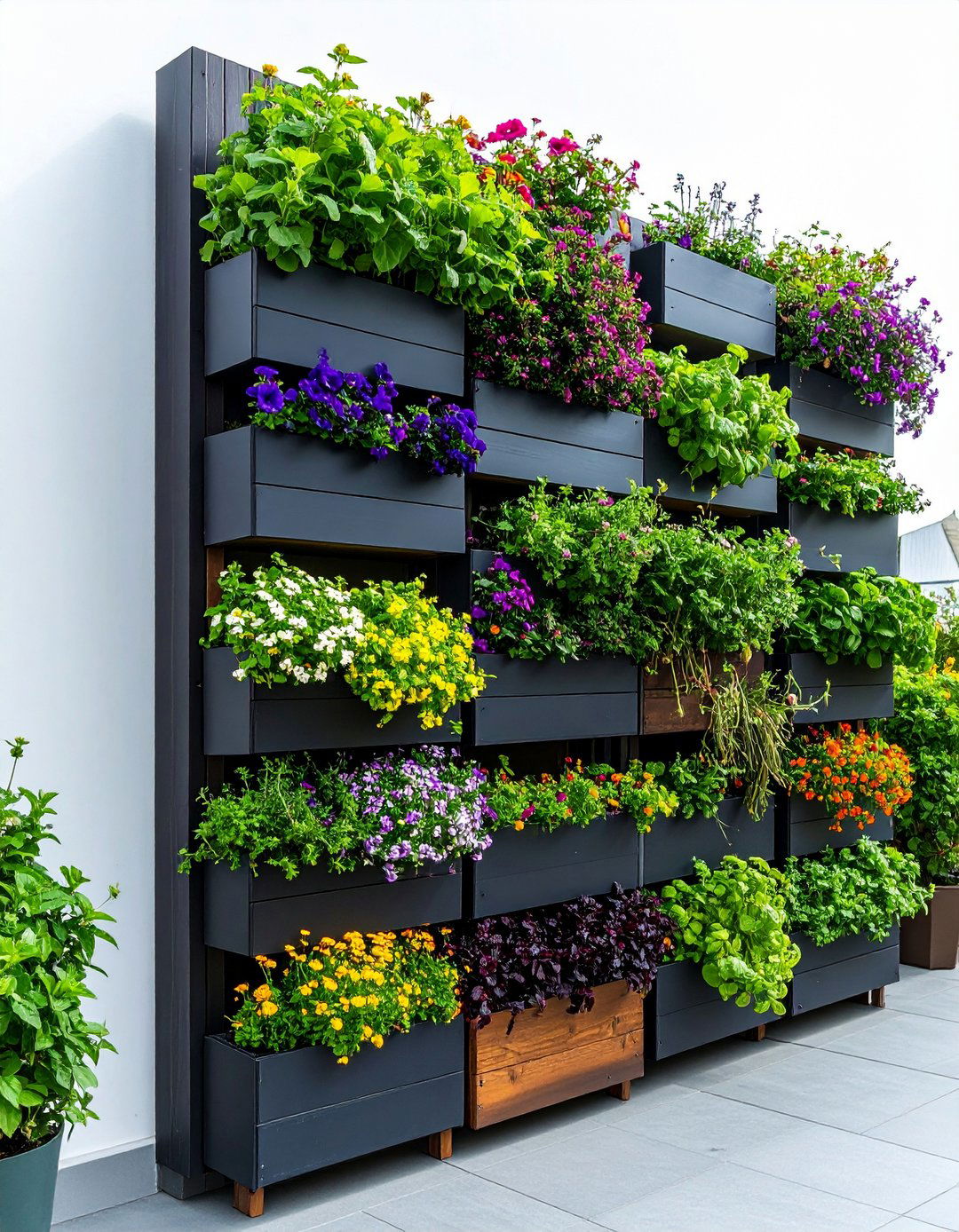
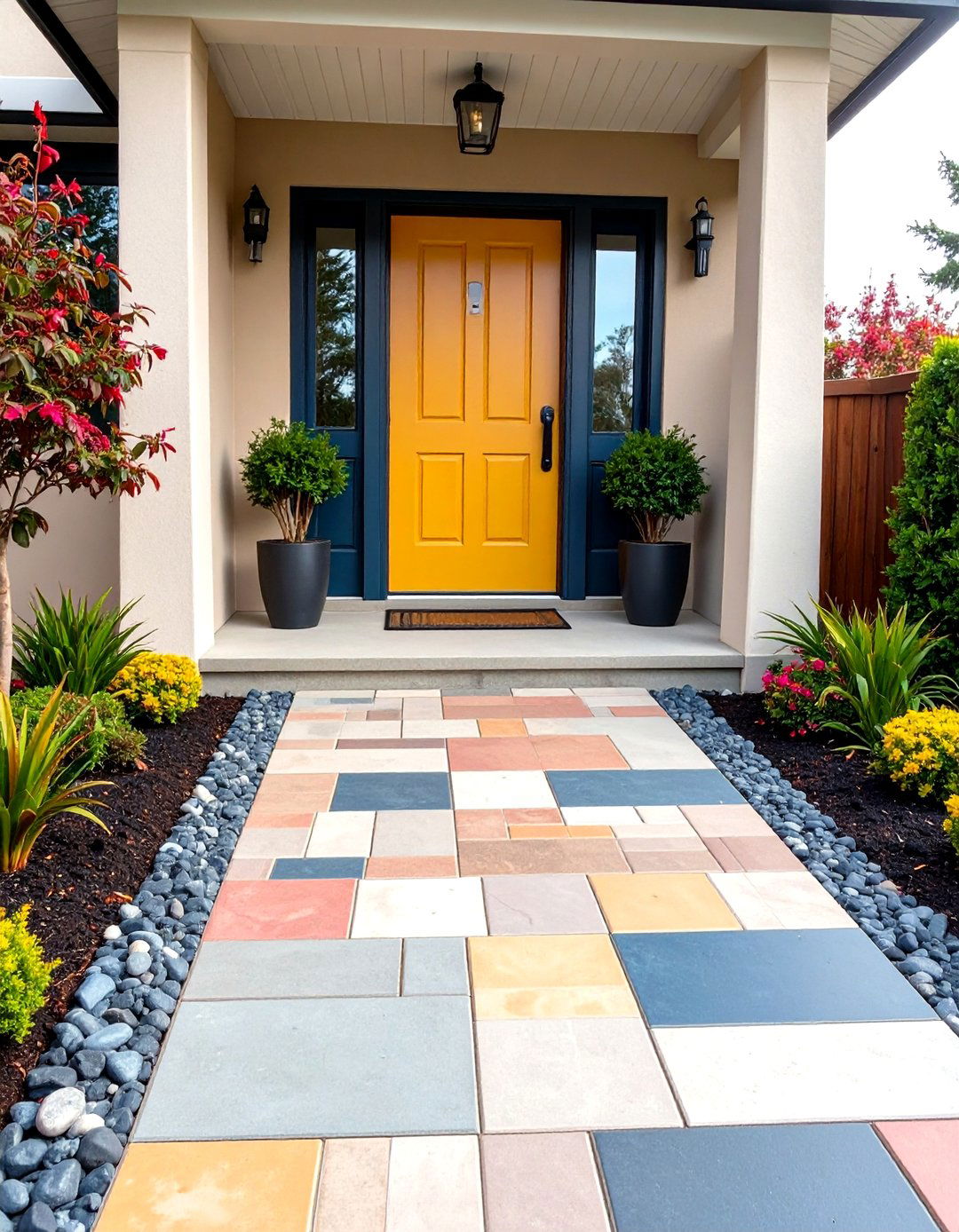

Leave a Reply